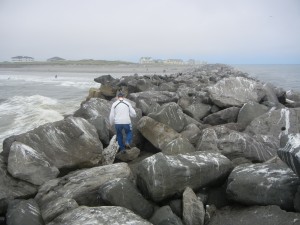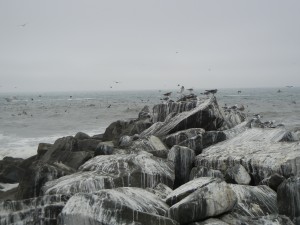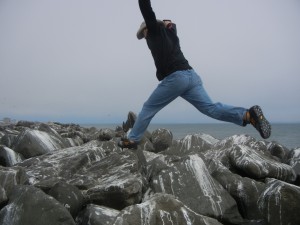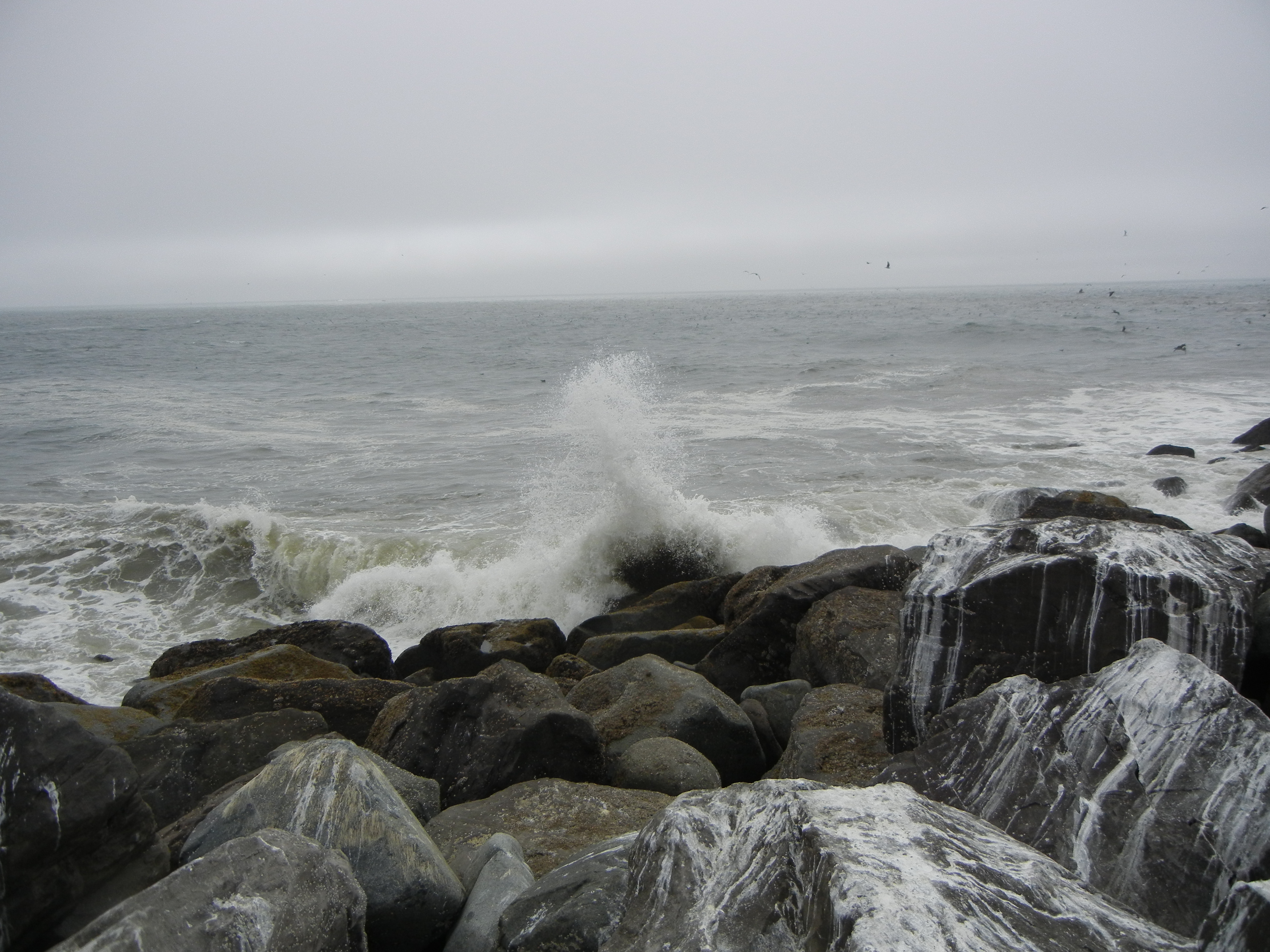Ascending Saint Helens, Part 2 of 4: Rock-hopping at the jetty
After deciding to climb Mt. Saint Helens in early 2012 and committing myself by actually purchasing the permits back in February, Dad and I had been training for the climb for months as the ascent date approached. It wasn’t until August finally arrived that we fully realized the gravity of the task we were about to undertake and upon reevaluation, found ourselves lacking in several training areas.
When deciding to climb a mountain (and having never attempted anything like it in the past) one generally has to do a lot of internet research to read stories from other people who have done it. I wanted to find out all the tips and tricks, heed the warnings and recommendations, and learn the stories of victory and defeat. In my research I found that the first two to three miles of Saint Helens’ Monitor Ridge route was a challenging uphill hike through the forest…something for which Dad and I felt adequately prepared. But I also learned that the third and fourth mile of the five-mile climb involved a good deal of boulder-scrambling, something for which we had not been training.
 Fortunately, dad lives in Ocean Shores, Washington, and I realized a few weeks ago that there was a perfect training opportunity sitting literally in his backyard. And it had been there for almost a hundred years. The north jetty in Ocean Shores was built in 1916 by the US Army Corps of Engineers and is a three-mile long stretch of boulders the size of Volkswagens (some more like Escalades).
Fortunately, dad lives in Ocean Shores, Washington, and I realized a few weeks ago that there was a perfect training opportunity sitting literally in his backyard. And it had been there for almost a hundred years. The north jetty in Ocean Shores was built in 1916 by the US Army Corps of Engineers and is a three-mile long stretch of boulders the size of Volkswagens (some more like Escalades).
We decided – at the risk of injuring ourselves and not being able to make the Saint Helens climb – that the best way to prepare for the boulder-scrambling on such short notice was to hike to the end of the jetty and back. Upon reaching the beach, it became clear that we’d only be able to hike about half of the jetty since the inland portion was mostly submerged during high tide. Still, there was a good mile or so that we could traverse to prepare ourselves and we set our sights on the chalk-white boulders at the end of the jetty.
It wasn’t until we were about halfway out that we realized the “chalk” that make the rocks toward the end of the jetty so white was, in fact, bird droppings, and the farther out we got the more it smelled like a barnyard. However, despite the biological paint covering the boulders, dad and I pressed on, convinced that navigating these car-sized boulders would at least give us a feel for what we might encounter in the second-third of our climb.
 Finally we reached the end of the jetty, driving off the resident gulls, cormorants, pelicans, and terns to their great annoyance. One of the things I love about Washington State is the fact that, after hiking to the end of a jetty, you can find yourself surrounded by so many species of wild creatures that it will literally make your head spin.
Finally we reached the end of the jetty, driving off the resident gulls, cormorants, pelicans, and terns to their great annoyance. One of the things I love about Washington State is the fact that, after hiking to the end of a jetty, you can find yourself surrounded by so many species of wild creatures that it will literally make your head spin.
To our left, a group of California Sea Lions would surface occasionally, taking a break from their search for food. Below us, a sea otter munched away on shellfish she’d caught at the foot of the jetty. To our right, perhaps two dozen seals would poke their dog-like heads out of the surf and stare at us as if we were extra-terrestrials who’d just landed on their planet, and all the while a cloud of birds whirled about our heads, squawking and calling, waiting for us to vacate their pooping grounds.
 Eventually deciding it was time to head back we continued hopping from rock to rock, strategically choosing our footing. It was abundantly clear to me that the Hi-Tec Sierra Lite I WP boots I had were not only keeping my ankles from rolling after an occasional misstep or two, but the Vibram soles were absorbing much of the shock of hitting boulder after boulder. I was convinced that these were the boots that would successfully carry me to the peak of Washington’s most well-known volcano, and I could only hope that Dad and I had prepared enough for the ascent.
Eventually deciding it was time to head back we continued hopping from rock to rock, strategically choosing our footing. It was abundantly clear to me that the Hi-Tec Sierra Lite I WP boots I had were not only keeping my ankles from rolling after an occasional misstep or two, but the Vibram soles were absorbing much of the shock of hitting boulder after boulder. I was convinced that these were the boots that would successfully carry me to the peak of Washington’s most well-known volcano, and I could only hope that Dad and I had prepared enough for the ascent.
UP NEXT…Ascending Saint Helens, Part 3 of 4: More than a mountain

